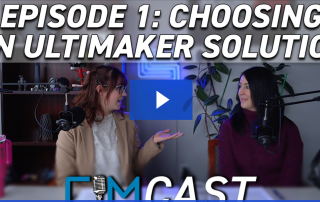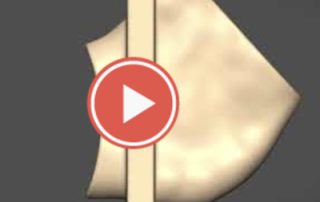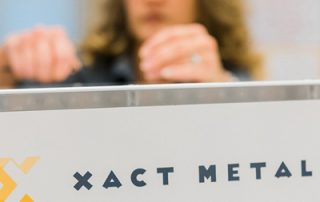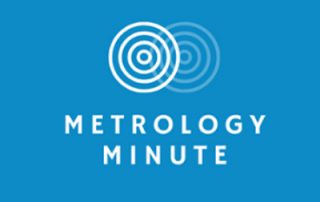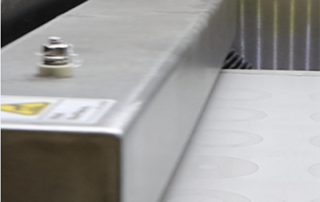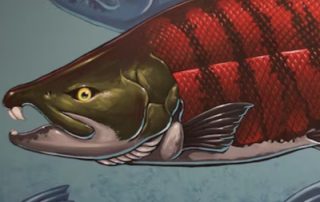Training Classes – CimCast
Training Classes In our second episode of CimCast, we discuss the Mastercam training classes that Cimquest offers. If you have podcast topic ideas, please send them to cimcast@cimquest-inc.com.
Freeform Webinar Redefining Patient-Specific 3D Design
Oqton Freeform is the industry’s most comprehensive design software for products across many healthcare specialties. With Freeform you can: Design in hours, not days. Break through the limitations of traditional CAD systems with Freeform’s intuitive UI to unlock the incredible advantages of working in the digital world. Please join us for this upcoming webinar. Redefining Patient-Specific 3D Design February 21st, 2024 – 1:00 PM - 2:00 PM EST In this webinar, experts from Oqton and Cimquest will showcase two powerful, digital, and organic design workflows using Oqton's Freeform. We will demonstrate the creation of a craniomaxillofacial implant and its associated cutting guides as well as the design of a custom ankle-foot orthotic. Freeform is the industry’s most comprehensive design software for products across many healthcare specialties. Solve your patient-specific design challenges in the digital world. Register Here
Innovation in Metal 3D Printing: A Look into Our Thriving Partnership with Xact Metal
While the growth of larger players in the metal 3D printing industry has plateaued during the last year, Cimquest’s metal 3DP business has grown 69% year over year. Some of the reasons for that growth are largely due to the popularity of Xact Metal’s printers and the relationship they cultivate with their customers and resellers. Xact Metal offers a unique value proposition; a high quality, easy-to-implement machine that is an excellent entry point into metal additive or to expand your current metal 3D printing capabilities. Thanks to this strong partnership, Cimquest has maintained our position of being Xact Metal’s #1 Global Partner for three years in a row! Additionally, we recently sold our XM200C demo unit and are looking forward to the delivery of our brand new XM200G printer in our Branchburg, NJ office. The XM200G is a greatly enhanced version of the proven, easy-to-use, and cost-effective design of the XM200C metal 3D printer. It incorporates a high-performance galvanometer system that moves the laser beam over the powder bed. This architecture provides faster printing speeds and supports multiple lasers with higher power output (up to two 400-watt fiber lasers). This combination allows for an expanded materials portfolio as well as a larger build [...]
Utilizing Construction Features for Theoretical Intersections in Control X
Inspection drawings will often have dimensions created to a theoretical intersection. What this means is that the dimension references one or more points in space that aren’t physically on the model. What do you do in situations like this? Let's explore this in the example below. Using the screenshot below, let's assume that we need to dimension to locations in space where these lines would theoretically intersect if extended. Below you can see the theoretical intersection points of the lines referenced, created using Construction Features in Control X. Linear Dimensions 9, 10 and 11 were produced as intersections of two lines on the CAD model to extract their intersection points. As long as those model edges are obtainable from the scan, 2D dimensions from these theoretical intersections can be added anywhere on the model. See below for an illustration. Please contact Joel Pollet with any questions or to explore more details about Control X. More Info on Control X
What’s the Value of a Multi-purpose Tool Like Metal Binder Jet 3D Printing?
Just like there’s no one tool to fit every job, 3D printing isn’t a panacea that’s right for every job either. And while the benefits of binder jet 3D printing can often be measured – customers routinely reduce the weight of their parts by 30 – 40% using our technology – much of the return on investment (ROI) of binder jetting lies in the complex intangibles and specific applications, or where one operates in the supply chain. One often hears that 3D printing is “another tool in the manufacturer's toolbox.” And just like there’s no one tool to fit every job, 3D printing isn’t a panacea that’s right for every job either. So, additive manufacturing isn’t going to completely replace CNC machining and shutter every machine shop. Rather, binder jet 3D printing is a way of harnessing metal – or other materials like technical ceramics and sand – to additively produce complex shapes in a way that’s uniquely different and beneficial from other tools that already exist in a manufacturer’s toolbox. It’s a digital manufacturing solution that eliminates hard tooling or consolidates complicated assemblies and is a powerful addition to any production facility looking to be more efficient in its use of existing machinery or [...]
3D Printing Helps Preserve A Saber-Toothed Salmon
Reprint from OPB A saber-toothed salmon, as depicted by artist Ray Troll. The mural is part of the University of Oregon Museum of Natural and Cultural History. - University of Oregon For years, museum conservators and paleontologists have yearned for a way to duplicate fragile fossils without damaging them. Now scientists with the University of Oregon say they have found a way to do just that, with the help of a relatively inexpensive 3D printer. They've starting by duplicating the skull of a particularly important fossil in their collection: a giant saber-toothed salmon fossil discovered near Madras, Ore. Nick Famoso, a PhD student at the university, is helping with the replication process. He says saber-toothed salmon, Oncorhynchus rastrosus, swam the oceans and rivers of the Northwest 5 to 7 million years ago. They were ancestors of sockeye salmon. “Put a big old gnarly tooth in the front jaw. Make it a lot bigger. That’s a saber-tooth salmon,“ he says. The salmon grew to be 6- to 12-feet long, on a vegetarian diet of plankton and filter food. The tooth, which grew as long as a human thumb, developed on spawning males. Famoso says the university holds what's known as a "type [...]


